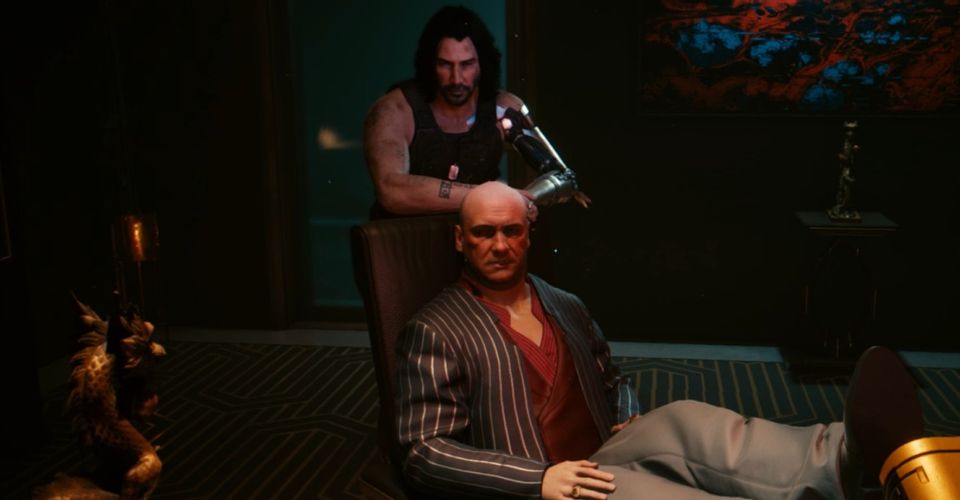Cyberpunk 2077: Keanu Reeves Is Basically The Joker From Arkham Knight

Johnny Silverhand isn’t really alive in Cyberpunk 2077 but he appears in it a whole lot, just like the Joker did in Rocksteady’s Batman: Arkham Knight. In Arkham Knight the Joker was a figment of Batman’s tortured psyche, a death he felt responsible for and manifested into a visible form. This was a great way for Rocksteady to bring back the “Joker versus Batman” dynamic without going back on the ending of the previous game, and the way Joker simply appeared in missions or on rooftops, as if he had been there waiting for Batman all along, was both entertaining and ominous.
[WARNING: Mild spoilers for Cyberpunk 2077 below]
In Cyberpunk 2077, Keanu Reeves’ Johnny Silverhand acts much the same. Johnny is as equally dead as the Joker (and, occasionally, equally as terroristic) but his consciousness has been implanted into the player’s head. This means that as V travels throughout the world of Cyberpunk 2077’s Night City Johnny is there with them, appearing occasionally to discuss the past, the present, or how a certain guitarist on a street corner makes him feel about the state of the universe. These interactions aren’t something that happens all the time and they usually don’t last for very long, but almost each and every one feels important to the story and helps players to understand just who Johnny was as a human being.
Even though both characters like to blow up buildings and spend time occasionally threatening super-powered individuals, Keanu Reeves’ Johnny Silverhand isn’t quite as evil as Joker, nor does he appear just to antagonize V. Players are initially introduced to Johnny in some of the most uncomfortable scenes in Cyberpunk 2077’s early game and he spends a good amount of time egging them on to commit suicide, but later on he apologizes and attempts to help V accomplish her goals. While it’s clear Johnny isn’t supposed to be viewed as a hero, he’s definitely more of a good guy than Joker ever was.
Cyberpunk & Batman: When It’s Time To Look Away

Players often didn’t see Joker appear or disappear in Batman: Arkham Knight, and that’s one of the reasons why his scenes were so disturbing. Batman would simply turn a corner and there Joker was, sitting on the floor or leaning against a computer terminal, clearly waiting for them. He would remain as long as the camera was looking at him, but as soon as the player turned their head and then looked back, he was gone. Much like the way quantum teleportation worked in Outer Wilds, the magic only happened when players weren’t looking.

In the case of Johnny Silverhand in Cyberpunk 2077, players see Johnny materialize all the time. There will be a blue and white flicker of glitchy particles (on purpose, not like those other bugs and glitches in Cyberpunk) and Reeves’ character will appear. Like the Joker, no one can see Johnny but the player, and other characters don’t hear their conversations. However, while not always true, often Johnny will stay on the screen long after his current round of dialog is over. As long as the player continues looking at him he will remain, but as soon as he is out of the player’s field of view Johnny will completely disappear instantly.
Giving players a sort of partner, one only they can have dialog with, is a great narrative tool that helps with both exposition and worldbuilding. By having Johnny inform V of things about Night City the player doesn’t know it acts as an organic way for information to be delivered while also building and expanding the relationship between the two characters. The way CDPR uses Johnny Silverhand in Cyberpunk 2077 is incredibly reminiscent of what Rocksteady did with the Joker in Batman: Arkham Knight, but that’s not a bad thing – the latter is a fantastic game, and the Joker’s scenes are a large part of why it remains so memorable.
About The Author


















